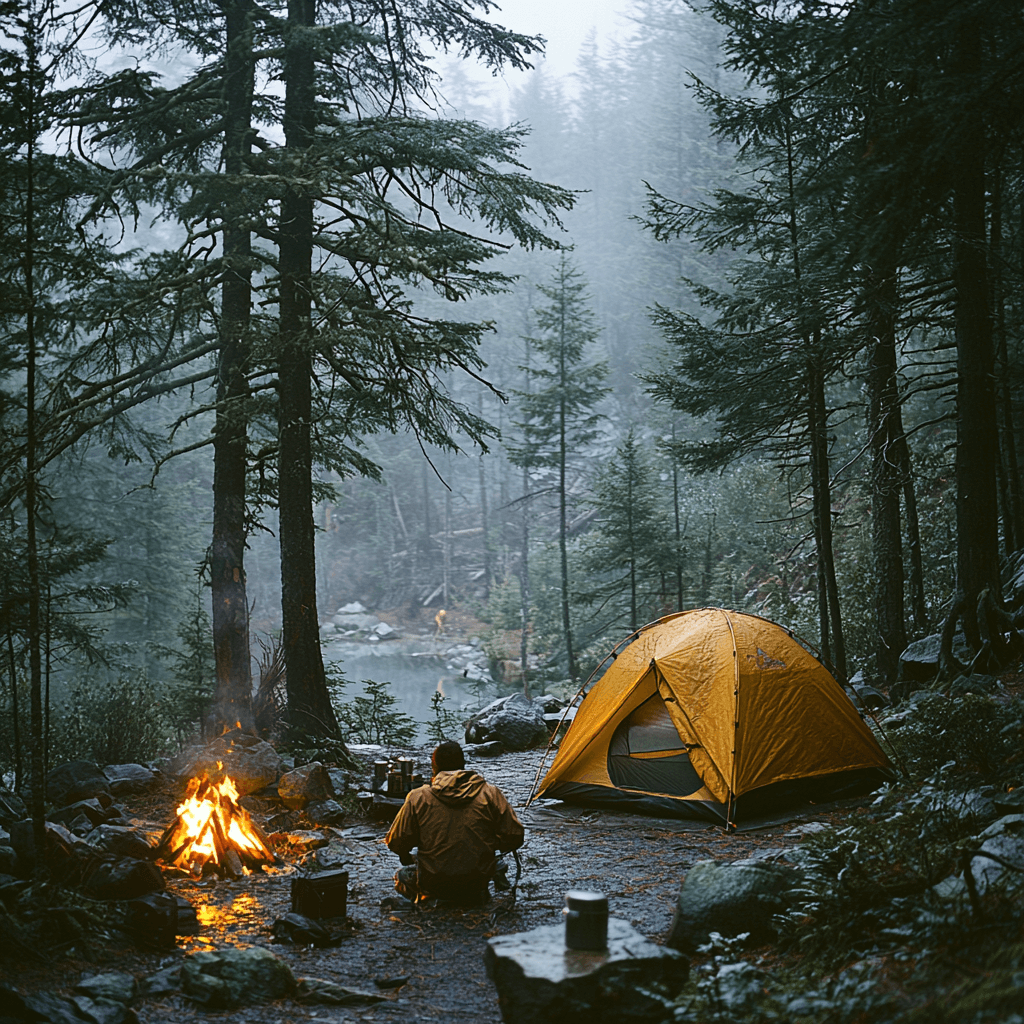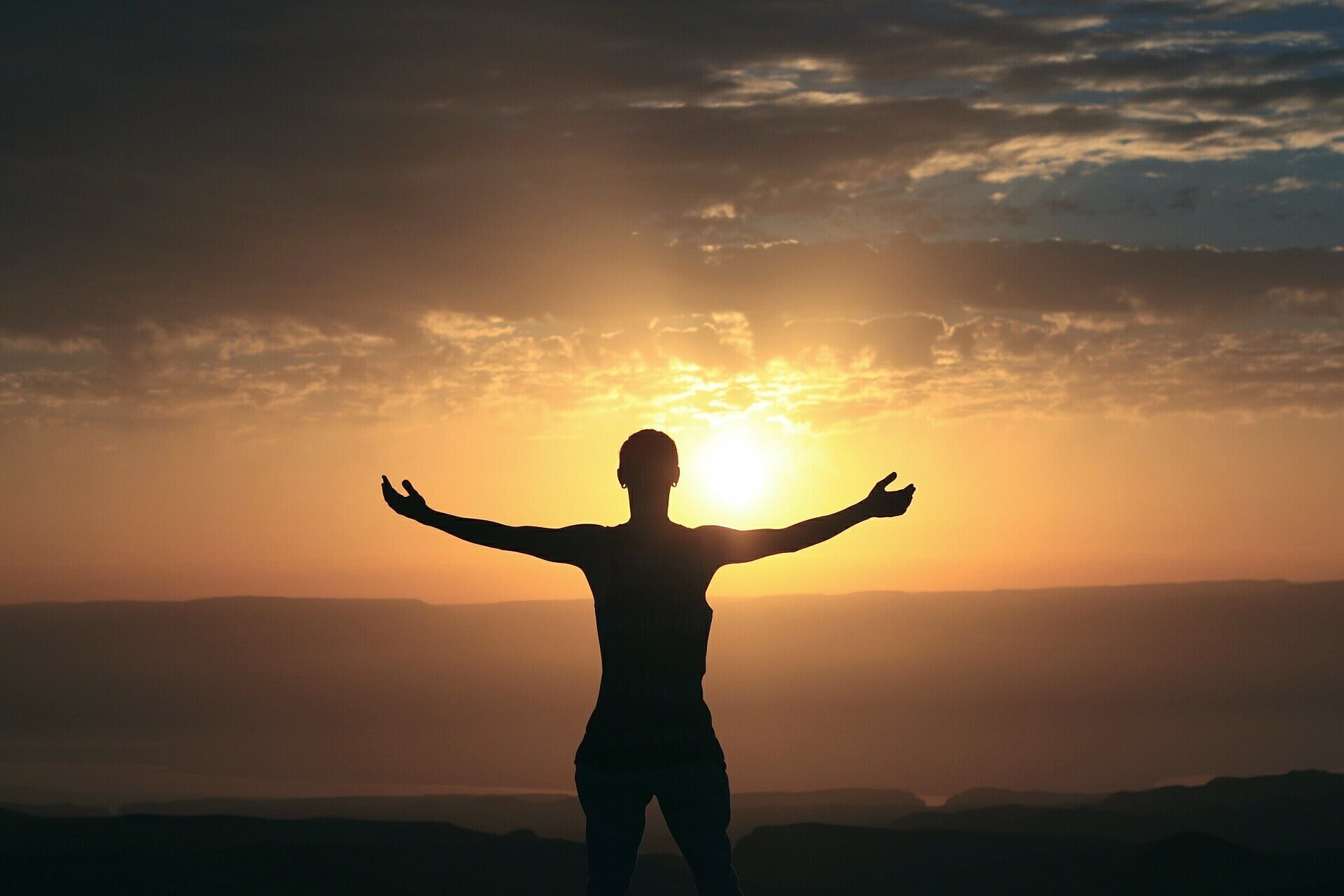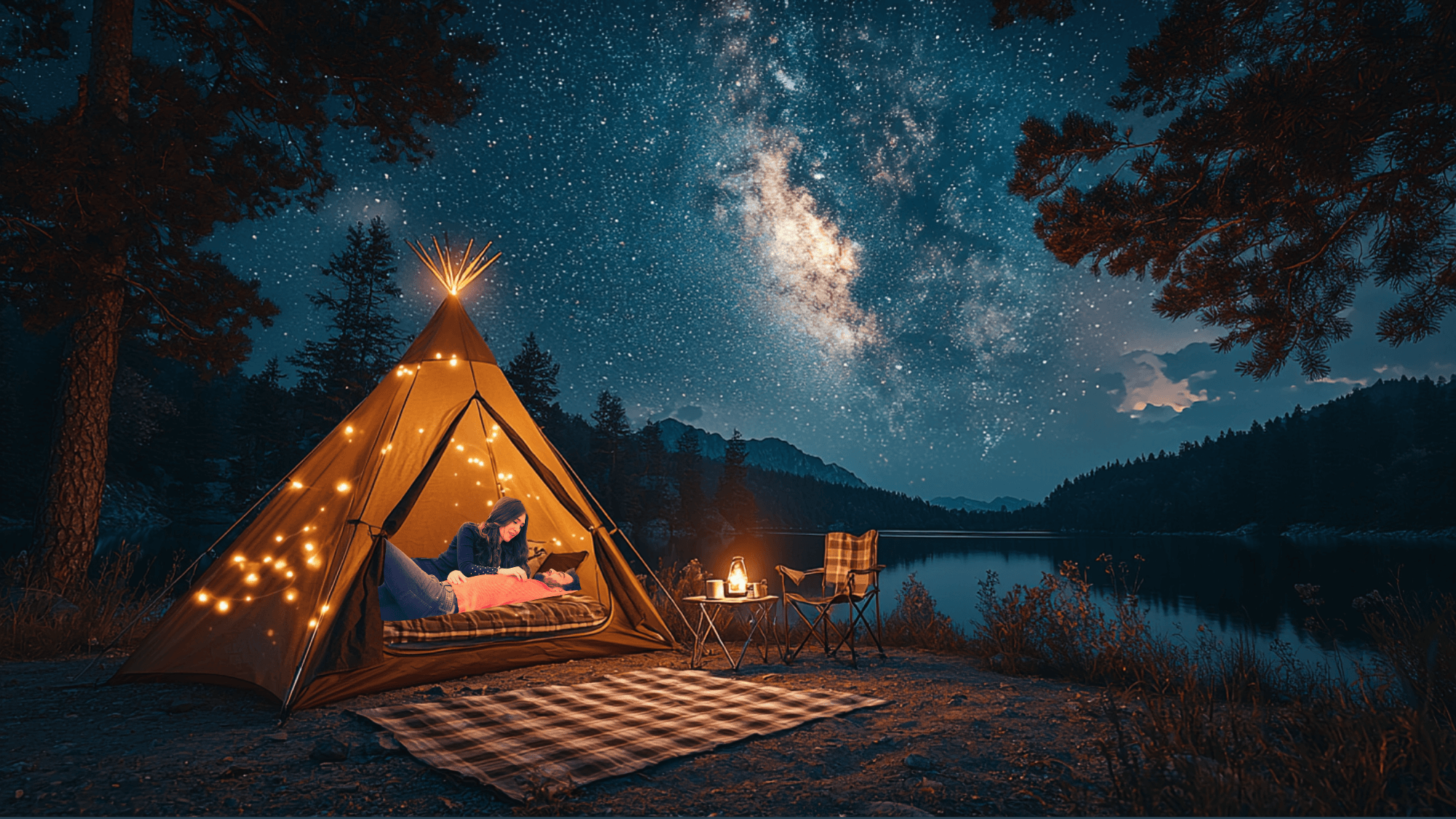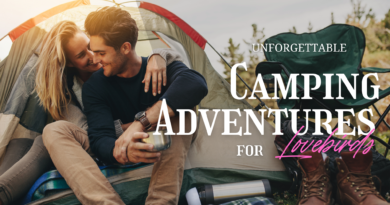The Ultimate Camping Checklist for Beginners
Are you ready to embark on your first camping adventure but feeling a bit overwhelmed? Don’t worry! We’ve got you covered with this comprehensive guide filled with the ultimate camping checklist for beginners. Whether you’re planning a weekend getaway or a longer outdoor expedition, this ultimate camping checklist will help ensure your trip is a success. So, grab a cup of coffee, sit back, and let’s dive into the world of camping!
Why Camping is a Great Way to Connect with Nature
Before we jump into the nitty-gritty of camping tips, let’s talk about why camping is such an amazing experience. Camping allows you to disconnect from the hustle and bustle of everyday life and immerse yourself in nature. It’s a chance to breathe in fresh air, gaze at starry skies, and create lasting memories with friends and family.
Camping also offers numerous benefits for your physical and mental well-being. It can help reduce stress, improve your mood, and boost your overall health. Plus, it’s a fantastic way to learn new skills and gain a deeper appreciation for the great outdoors.
Essential Gear: What to Pack for Your Camping Trip
Now that we’ve covered why camping is awesome, let’s get into the practical stuff. Packing the right gear is crucial for a successful camping trip. Here’s a list of essential items you’ll need:
Shelter
- Tent: Choose a tent that’s appropriate for the number of people in your group and the weather conditions you’ll face.
- Tarp: A versatile item that can provide extra shelter or ground cover.
- Sleeping bags: Pick ones rated for the temperatures you’ll encounter.
- Sleeping pads or air mattresses: For extra comfort and insulation from the ground.
Clothing
- Weather-appropriate clothing: Pack layers to accommodate changing temperatures.
- Rain gear: Even if the forecast looks clear, it’s always good to be prepared.
- Sturdy hiking boots or shoes: Comfort is key when you’re on your feet all day.
- Extra socks: Trust us, you’ll thank us later!
Food and Water
- Cooler: To keep perishables fresh.
- Non-perishable food items: Think granola bars, trail mix, and canned goods.
- Cooking equipment: Portable stove, fuel, pots, pans, and utensils.
- Water containers: Don’t forget to bring enough water or a way to purify water from natural sources.
Navigation and Safety
- Map and compass: Even if you have a GPS, it’s good to have a backup.
- First aid kit: Be prepared for minor injuries or ailments.
- Flashlight or headlamp: Don’t forget extra batteries!
- Multi-tool or knife: A versatile tool for various camping tasks.
Miscellaneous Items
- Insect repellent: Keep those pesky bugs at bay.
- Sunscreen: Protect your skin, even on cloudy days.
- Toilet paper: You’ll be glad you brought it!
- Trash bags: Leave no trace and keep your campsite clean.
Choosing the Perfect Campsite: Location, Location, Location
Selecting the right campsite can make or break your camping experience. Here are some tips to help you choose the perfect spot:
Research and Reserve
Before you head out, do some research on potential campsites. Look for reviews, amenities, and regulations. Many popular campgrounds require reservations, especially during peak seasons, so book in advance if possible.
Consider Your Needs
Think about what’s important to you. Do you want a site with easy access to hiking trails? Or maybe you prefer a spot near a lake for fishing and swimming. Consider factors like shade, proximity to water sources, and distance from other campers.
Assess the Terrain
Once you arrive at your chosen campground, take a good look at the available sites. Look for a flat area to pitch your tent, and avoid low-lying areas that could flood if it rains. Check for potential hazards like dead trees or loose rocks.
Be a Good Neighbor
If you’re camping in a busy area, be mindful of your neighbors. Choose a site that gives you some privacy but doesn’t infringe on others’ space. And remember, sound carries easily in the outdoors, so keep noise levels down, especially at night.
Setting Up Camp: A Step-by-Step Guide
Now that you’ve chosen your perfect spot, it’s time to set up camp. Follow these steps for a smooth setup process:
- Clear the area: Remove any rocks, sticks, or debris from your tent site.
- Lay out your tent: Unfold your tent and position it so the door faces away from the wind.
- Stake it down: Secure your tent to the ground using the provided stakes.
- Assemble the poles: Follow the instructions for your specific tent model.
- Raise the tent: Carefully insert the poles into the appropriate sleeves or clips.
- Adjust and tighten: Make sure everything is taut and properly aligned.
- Set up your sleeping area: Arrange your sleeping bags and pads inside the tent.
- Organize your gear: Designate areas for cooking, storage, and relaxation.
Pro tip: Practice setting up your tent at home before your trip. This will save you time and frustration at the campsite!
Campfire 101: How to Build and Maintain a Safe Fire
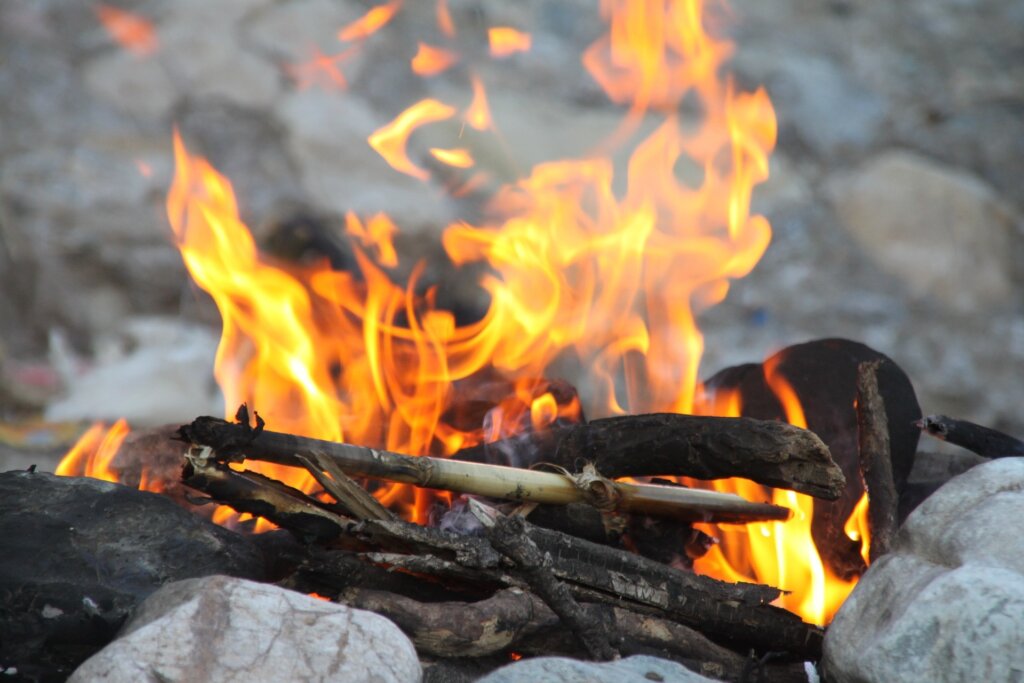
A campfire is often the heart of a camping trip, providing warmth, light, and a place to cook and gather. Here’s how to build and maintain a safe fire:
Check Regulations
First, make sure campfires are allowed in your area. During dry seasons or in certain locations, fire bans may be in effect.
Choose the Right Spot
Use an existing fire ring if available. If not, choose a spot away from overhanging branches, bushes, and dry grass. Clear a 10-foot diameter area around your fire site.
Gather Materials
You’ll need three types of materials:
- Tinder: Small, dry materials that ignite easily (e.g., dry leaves, newspaper)
- Kindling: Slightly larger sticks and twigs
- Fuel wood: Larger pieces of wood to keep the fire going
Build Your Fire
- Start with a small pile of tinder in the center of your fire pit.
- Arrange kindling over the tinder in a teepee shape.
- Light the tinder from multiple sides.
- As the fire grows, gradually add larger pieces of wood.
Maintain and Extinguish
Keep your fire manageable and never leave it unattended. When it’s time to put it out, sprinkle water on the embers and stir the ashes. Repeat until the fire is completely cold to the touch.
Camping Cuisine: Simple and Delicious Meal Ideas
One of the joys of camping is cooking and eating in the great outdoors. Here are some easy and tasty meal ideas for your trip:
Breakfast
- Oatmeal with dried fruits and nuts
- Breakfast burritos with pre-scrambled eggs, cheese, and veggies
- Pancakes (bring a pre-made mix for convenience)
Lunch
- Sandwiches or wraps with non-perishable fillings
- Trail mix and fresh fruit
- Canned soups (great for chilly days)
Dinner
- Foil packet meals: Combine meat, vegetables, and seasonings in foil and cook over the fire
- One-pot pasta dishes
- Campfire chili
Snacks and Desserts
- S’mores (a camping classic!)
- Roasted nuts or seeds
- Fresh fruit and vegetables
Remember to pack food in airtight containers and store it properly to avoid attracting wildlife to your campsite.
Leave No Trace: Camping Responsibly
As campers, it’s our responsibility to preserve the natural environment for future generations. Follow these Leave No Trace principles:
- Plan ahead and prepare: This helps minimize waste and impact on the environment.
- Travel and camp on durable surfaces: Stick to established trails and campsites.
- Dispose of waste properly: Pack out all trash and leftover food.
- Leave what you find: Enjoy nature, but don’t take souvenirs.
- Minimize campfire impacts: Use established fire rings and keep fires small.
- Respect wildlife: Observe from a distance and don’t feed animals.
- Be considerate of other visitors: Respect others’ experience of the outdoors.
Staying Safe: Tips for a Worry-Free Camping Experience
Safety should always be a top priority when camping. Here are some tips to ensure a worry-free trip:
Know Your Limits
Choose a camping experience that matches your skill level. If you’re new to camping, start with a well-established campground before venturing into more remote areas.
Be Prepared
Always carry a first aid kit and know how to use it. Learn basic first aid skills before your trip.
Stay Informed
Check weather forecasts before and during your trip. Be prepared to change your plans if severe weather is expected.
Wildlife Awareness
Learn about the wildlife in your camping area and how to safely coexist. Store food properly and never feed wild animals.
Stay Hydrated
Drink plenty of water, especially if you’re hiking or in hot weather. Know how to purify water from natural sources if necessary.
Tell Someone Your Plans
Always let a friend or family member know where you’re going and when you plan to return.
Troubleshooting Common Camping Challenges
Even with the best preparation, you might encounter some challenges. Here’s how to handle common camping issues:
Wet Gear
- Bring extra tarps to create a dry space.
- Pack clothes in waterproof bags.
- Carry fire starters to help get a fire going in damp conditions.
Insects
- Use insect repellent and wear long sleeves and pants.
- Avoid scented products that might attract bugs.
- Consider bringing a screened shelter for bug-free relaxation.
Temperature Extremes
- Layer your clothing for adaptability.
- In hot weather, seek shade and stay hydrated.
- In cold weather, use a sleeping bag liner for extra warmth.
Getting Lost
- Always carry a map and compass (and know how to use them).
- Stay on marked trails.
- If truly lost, stay put and wait for help.
Making the Most of Your Camping Experience
Camping is more than just sleeping outdoors. Here are some ideas to enhance your trip:
Connect with Nature
- Take nature walks and try to identify plants and animals.
- Stargaze on clear nights.
- Listen for and try to identify bird calls.
Outdoor Activities
- Go hiking on nearby trails.
- If near water, try fishing or swimming.
- Bring along outdoor games like frisbee or horseshoes.
Relax and Unwind
- Bring a book or journal to enjoy quiet moments.
- Practice outdoor yoga or meditation.
- Simply sit and enjoy the peace of nature.
Learn New Skills
- Try your hand at knot tying or fire starting.
- Learn to use a compass or read a topographic map.
- Attempt some bush crafting skills (while respecting nature, of course).
Conclusion: Embracing the Camping Lifestyle
Camping is an adventure that offers something for everyone, regardless of age or experience level. With this ultimate checklist of camping tips for beginners, you’re well-equipped to embark on your outdoor journey. Remember, the key to a successful camping trip is preparation, respect for nature, and a willingness to embrace new experiences.
As you become more comfortable with camping, you’ll develop your own tips and tricks. Each trip is an opportunity to learn and grow as an outdoor enthusiast. So pack your gear, gather your friends or family, and head out to create lasting memories under the stars.
Happy camping, and may your adventures be filled with wonder, laughter, and a deeper connection to the natural world around us!

